Learn about Backpacks for Backpacking
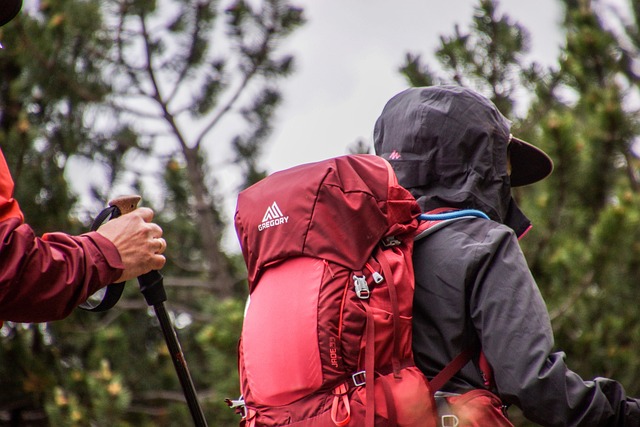
Table of Contents
Sweet Spot Recommendations
For most budget backpackers, I recommend:
- Internal or external frame (preferably internal)
- Volume 60 to 65 liters, depending on the volume of your gear
- Main compartment large enough to fit your sleeping bag (and maybe a bear canister if needed)
- Fabric made of rip-stop nylon with a fiber weight of at least 210 deniers
- Sternum strap
- Load lifters
- Shovel pocket
- Side water-botter holders
- Fits your torso length
- Suspension system transfers 20% of the load to your shoulders and 80% to your hips.
- Suspension system and padding allow you to comfortably carry 30 lbs.
Suspension System
A backpack’s suspension system transfers weight from your shoulders to your hips and allows you to move freely.
It includes the following components:
- Frame
- Back panel
- Hip belt
- Shoulder harnesses
- Load lifters
These components are discussed below.
Backpacks with Frames
Purpose of the Frame
The frame provides load support—it transfers weight from your back to your hips.
External Frame
Backpacks with external frames were once the only kind available but are now rare.
Internal Frame
Common types of internal frames:
- Stays: Two metal rods running vertically in parallel inside the backpack
- Framesheet: A semi-rigid plastic sheet near the hiker’s back.
- Wire perimeter frame: A thick metal wire around the inside perimeter of the backpack
- Tubular frame: An internal metal tube structure, usually rectangular or Y-shaped
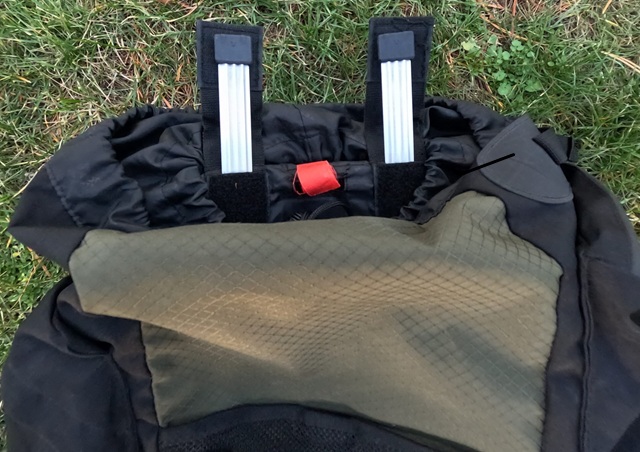

Pros and Cons of Internal vs External Frames
| Frame Type | Pros | Cons |
|---|---|---|
| Internal | • More comfortable for normal loads • Usually lighter • More flexible • More freedom of movement • Center of gravity closer to hiker’s back • Often have adjustable suspension systems • Very common | • Less comfortable for very heavy loads (>30lbs) • Inferior ventilation • Some models have inferior load support |
| External | • More comfortable for very heavy loads (>30 lbs) • Superior ventilation • Many models have superior load support • Objects can be attached to the frame | • Less comfortable for normal loads • Usually heavier • Less flexible • Less freedom of movement • Center of gravity further from hiker’s back • Usually don’t have adjustable suspension systems • Rare |
You will probably want an internal-frame backpack because you won’t want to carry much more than 30 lbs. However, you can save hundreds of dollars by buying an old external-frame backpack at a thrift store.
Frameless Backpacks
Although frameless backpacks are fine for most day hikes, they are not ideal for heavy loads and multi-day backpacking because they don’t provide load support.
Back Panel
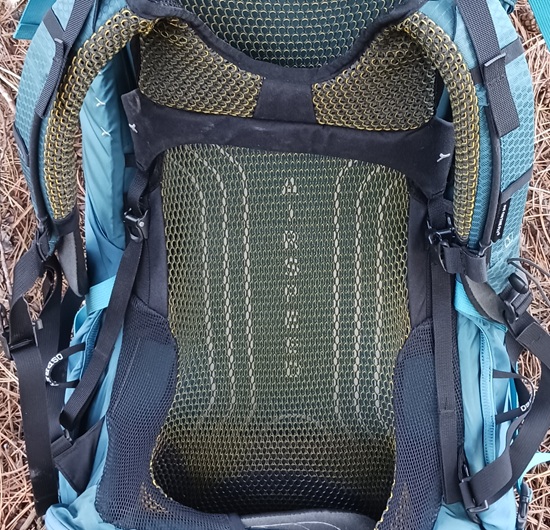
There are three common types of back panels
- Fabric
- Mesh-covered foam
- Suspended mesh, aka trampoline
Pros and Cons of Back Panel Types
| Back Panel Type | Pros | Cons |
|---|---|---|
| Fabric | • Light • Center of gravity close to back • Inexpensive | • No ventilation, gets soaked with sweat |
| Mesh-covered foam | • Center of gravity close to back • Inexpensive | • No ventilation, gets soaked with sweat |
| Suspended mesh (trampoline) | • Good ventilation | • Heavy • Center of gravity away from back • Shape can make it harder to fill pack with large gear • Expensive |
Some back panels have pads for lumbar support. An example is the back panel of the Gregory Baltoro 65.
Hip Belt

The hip belt is meant to carry about 80% of the load. Heavy loads require thick hip-belt padding.
Most women’s backpacks have hip belts that accommodate the contours of a woman’s hips.
Some hip belts have zippered pockets.
Shoulder Harnesses (aka Shoulder Straps)
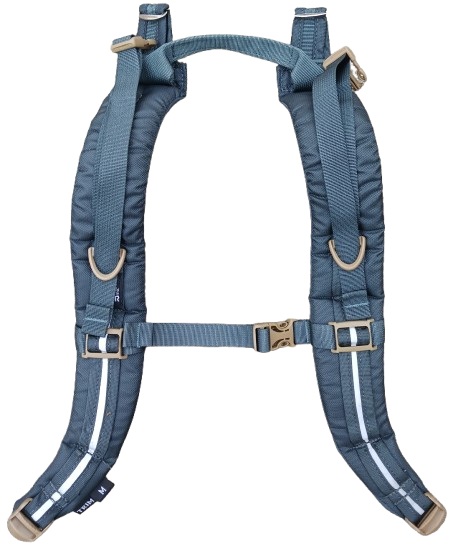
Note the S-shape of the harnesses
The shoulder harnesses are meant to carry about 20% of the load, which should be on the fronts of the harnesses. There should be virtually no load on the tops of the harnesses. The remaining 80% of the load should be on your hips.
Shoulder straps should have sufficient padding for the load you carry.
The shoulder harnesses of most backpacking backpacks are S-shaped to distribute weight evenly across the hiker’s chest.
Women’s backpacks typically have shoulder straps designed for the contours of a woman’s torso.
Straps
Sternum Strap
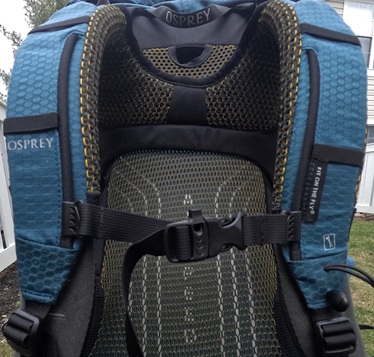
connecting the two shoulder harnesses
The sternum strap is a horizontal strap connecting the shoulder straps across the chest. Almost all backpacks have one. It has the following purposes:
- Prevents the shoulder straps from falling off your shoulders
- Allows you to adjust the fit of the backpack to your body
- Reduces strain on your shoulders
- Evenly distributes the weight of the backpack so it doesn’t shift around.
Load-lifter Straps (aka Load-lifters)

(above the shoulder harness)
Most backpacks have load-lifter straps, which pull the load toward your shoulders for balance and comfort.
Compression Straps
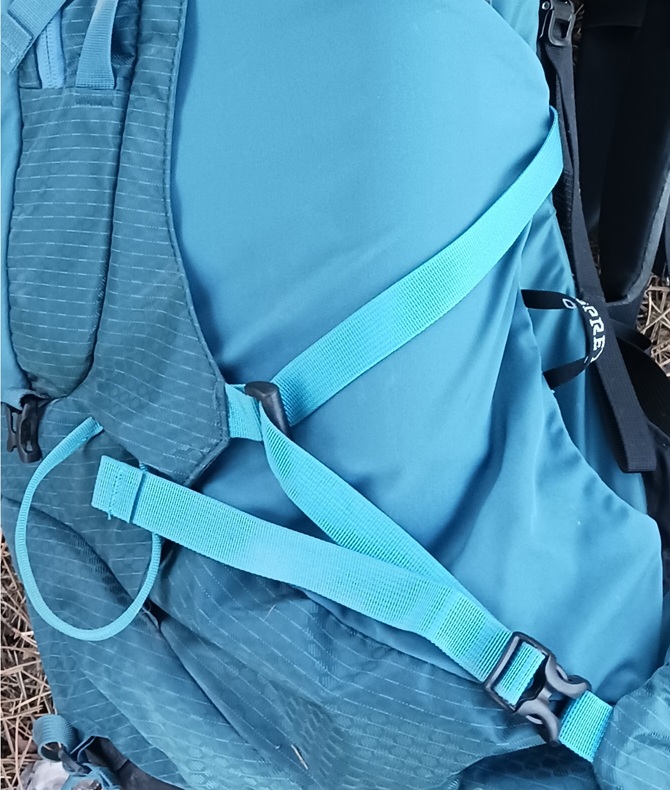
diagonal type
Compression straps adjust the backpack’s size to accommodate the volume of the gear inside. They provide the following benefits:
- Bring the load closer to your body for balance
- Balance the backpack laterally
- Prevent gear from shifting around inside
- Prevent items such as water bottles from falling out of the side pockets
Main Compartment
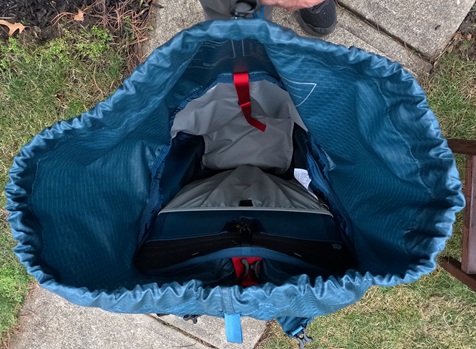
viewed from the top
For backpacking, one large main compartment is better than multiple smaller ones. A large compartment is necessary for carrying a sleeping bag, a tent, and a bear canister if needed.
Main compartments are typically opened from the top. Some main compartments allow access from the sides via vertical zippers. Side access is convenient, but a blown-out side zipper would allow the backpack’s contents to fall out. To mitigate this risk, side-access compartments typically have horizontal or diagonal compression straps on the sides to reduce lateral load on the zippers.
Sleeping Bag Compartment
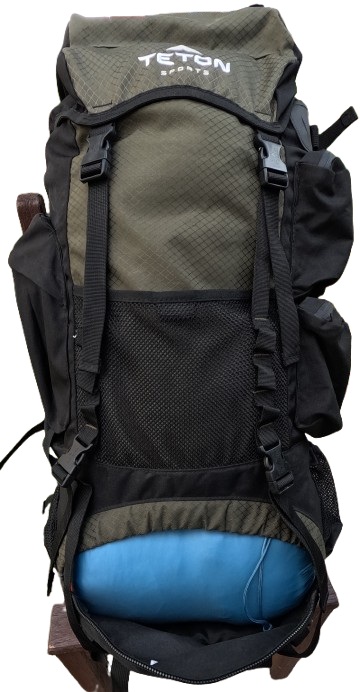
containing a blue sleeping bag
This compartment can be used to store your sleeping bag separately from your other gear. You can take the sleeping bag out of the pack through a zippered opening at the bottom. An internal flap across the top of the compartment keeps small items from falling below the sleeping bag where they would be hard to access.
Closure Systems
Top Lid (Brain)
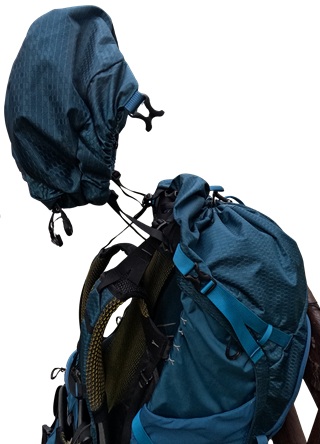
Top lids, also called brains, can be detachable or permanently attached to the rest of the pack. They have one or more zippered pockets for storing small items so you don’t have to dig into the main compartment to find them.
Rolltop
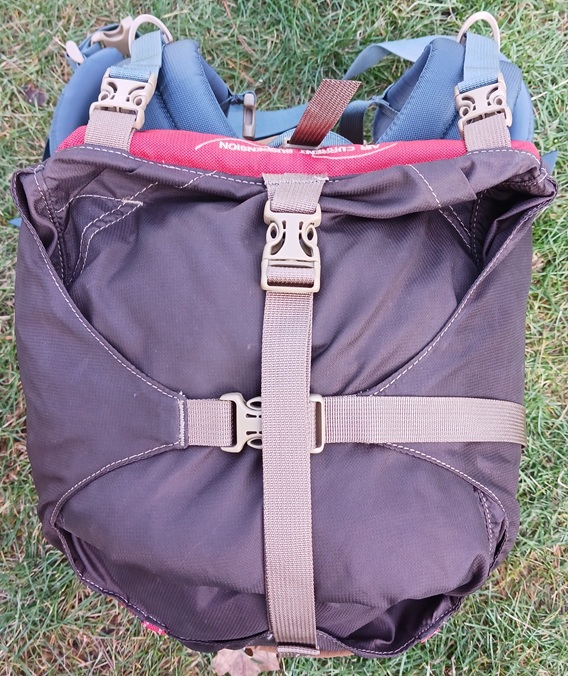
Rolltops are lighter but less convenient than top lids because they are harder to open and don’t have pockets. They typically have criss-crossed straps, which are good for carrying bear canisters.
Pockets
Front Pocket
The front pocket is on the side opposite your back. It is typically large.
Shovel Pocket
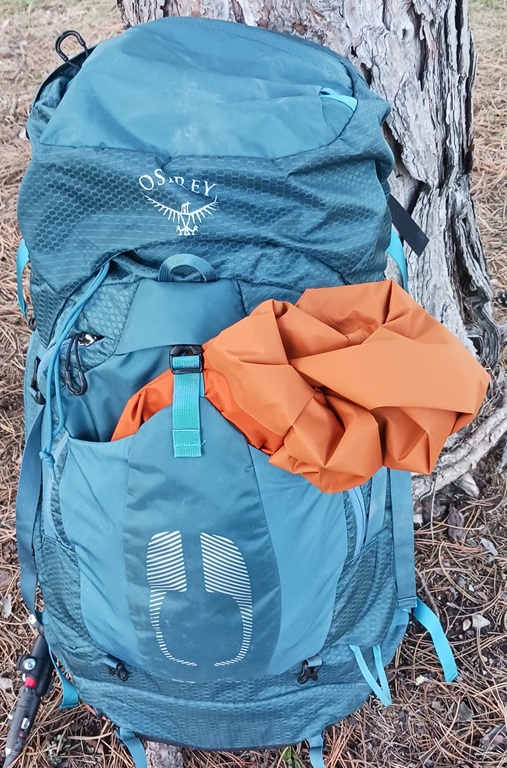
Most backpacks have a shovel pocket, a large front pocket with a wide top opening.
A shovel pocket is useful for storing warm clothing layers or rain gear so you can pull them out quickly without opening the backpack. You can store wet rain gear and other wet items in it so you won’t get your other gear wet. I use it to store my water filter so it doesn’t leak onto my other gear.
Shovel pockets often have a buckle on top to keep the mouth closed. They are often made of stretchy mesh, which makes it easy to stuff clothing inside but can be prone to tearing.
Water-bottle Holders
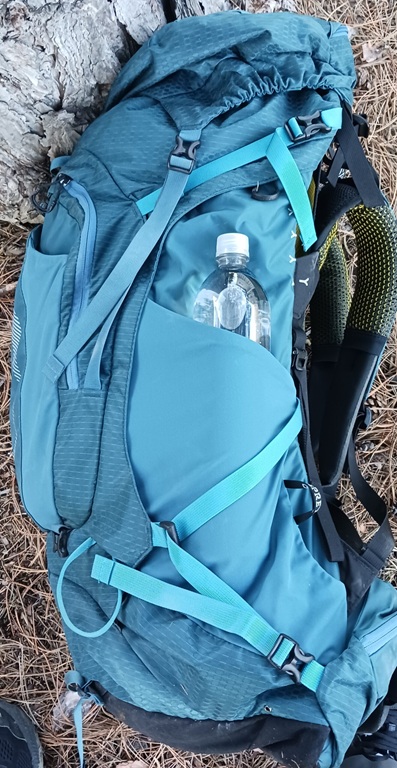
Most backpacks have vertical cup-shaped pockets at the bottom of each side for holding water bottles.
These pockets can also be used to carry long, slender objects such as tent poles.
Some water-bottle holders are made of stretchable fabric or mesh to tightly grip their contents. Others are made of non-stretchable fabric with elastic around the openings.
My favorite water-bottle holders have a front hole that allows you to pull out the water bottle while hiking with the backpack on.
Side Pockets
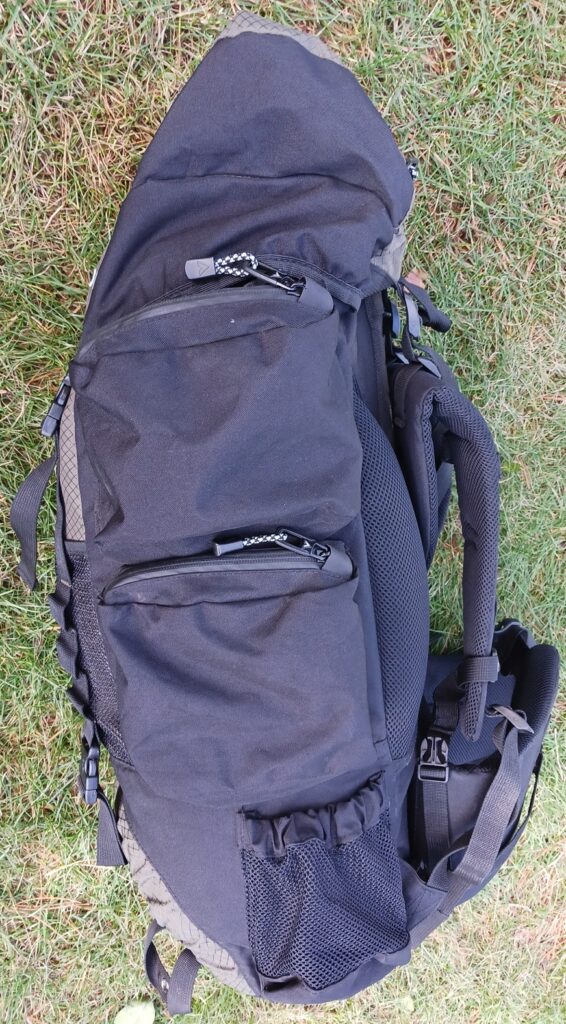
Some backpacks have zippered pockets on each side of the backpack, usually near the top. These are somewhat rare on backpacking backpacks because they get in the way of long objects inserted into the water-bottle holders
Hip Belt Pockets
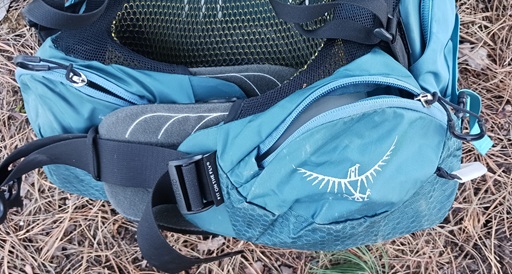
Some backpacks have zippered pockets in the front of the hip belts to hold small items such as keys, a pocket knife, or a mobile phone.
Hydration Sleeve
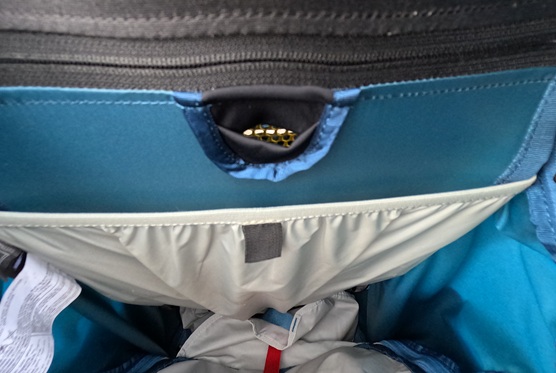
Above the sleeve is the hole for the hose
to pass through
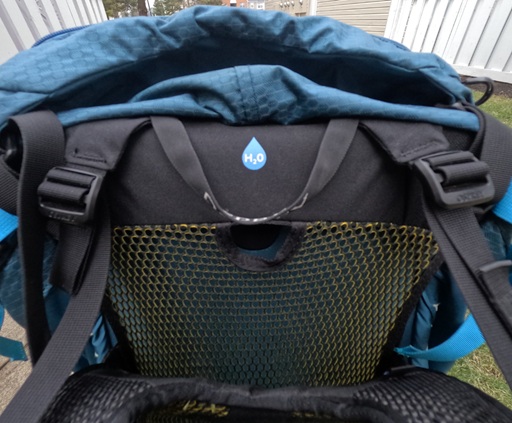
for the hose to pass through
Some backpacks have an internal sleeve for holding a hydration bladder and hose. The backpack contains a hole for the hose to pass through to your mouth so you don’t have to pull out your water bottle every time you drink.
Loops
Trekking Pole Loops
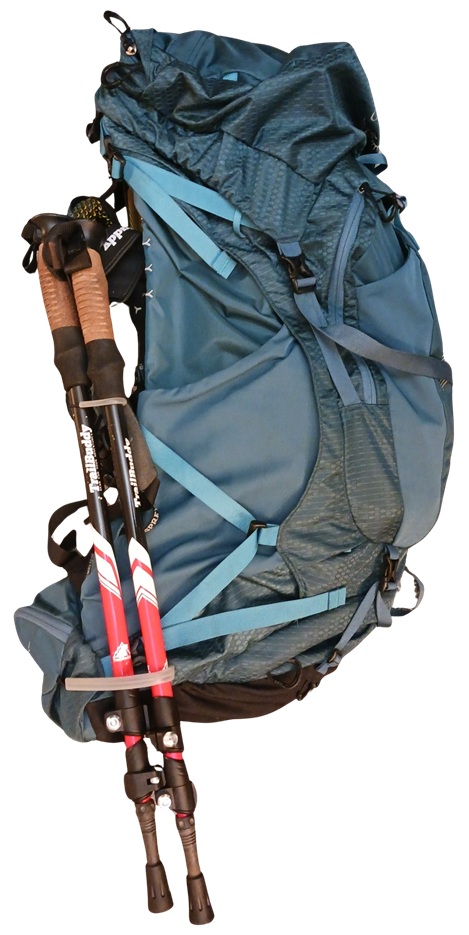
These loops hold your trekking poles when you aren’t using them.
Ice Axe Loop
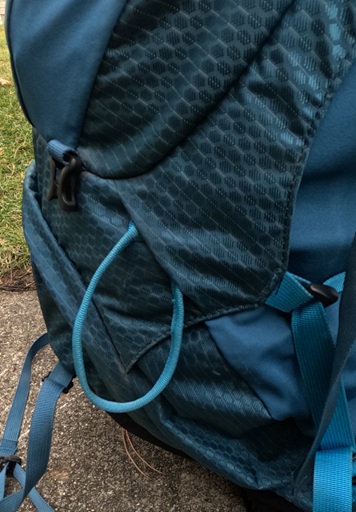
This loop is for carrying an ice axe. Most budget backpackers probably won’t need one.
Backpack Volume
Backpack product names often contain a number indicating the volume in liters or cubic inches. For example, the Osprey Atmos 65 has a volume of 65 liters.
To save weight, buy a backpack with the smallest possible volume. This will depend on the volume of all your other gear. For this reason, you should buy your backpack last, after you have bought all your other gear.
If you are a budget backpacker who buys cheap gear, it will probably be bulky and require a backpack with a large volume. My gear requires a volume of 65 liters when I backpack in cold weather. If you have mostly ultralight gear, 55 liters is probably more suitable.
When shopping for backpacks, take all your gear to the store and check whether it fits into each backpack you are comparing.
Backpack Weight Capacity
A backpack’s weight capacity indicates its durability and comfort when carrying heavy loads. Durability depends on factors such as the design, the fabric, and the stitching. Comfort depends on the design, the load transfer, and the padding on the hip belt and shoulder harnesses.
Backpacks designed for heavy loads are heavier than backpacks designed for light loads. This presents a dilemma for budget backpackers. If you buy heavy gear to save money, you must buy a heavy backpack to carry it. This is why you should carry as little gear as possible and consider paying extra for a lightweight or ultralight shelter and sleep system.
The only way to know a backpack’s comfortable weight capacity is to use it. Companies often report weight capacities for their models. However, the stated weight capacities are subjective, sometimes exaggerated, and not always comparable to those of other brands. One way to know the weight capacity without buying the backpack is to read reviews like the ones on this website. A better way is to bring all your gear to the store and compare how it feels in different backpacks. However, this won’t be a good simulation of how the backpack will feel after hiking for a few hours.
If you are a budget backpacker who buys inexpensive, heavy gear, you will probably need a backpack that can comfortably carry at least 30 lbs. Remember, you should carry no more than 20% of your body weight.
Backpack Size (Torso Length)
A backpack’s size indicates the torso length that it fits. The size does not indicate the backpack’s volume. The product label will usually indicate the range of torso lengths it fits. For example, the men’s Gregory Baltoro 65 has three sizes that fit the following torso lengths:
Torso Lengths in Inches
| Size | Torso Length (inches) |
|---|---|
| Small | 16”-18” |
| Medium | 18”-20” |
| Large | 20”-22” |
Many backpacks have adjustable sizes for each range of torso lengths, but beware–just because the size is adjustable doesn’t mean it will fit your torso. Make sure your torso size is within the backpack’s adjustment range.
The best way to get your torso measured is to visit an outdoor shop and let their staff do it. If you don’t have access to an outdoor shop, you can do it with a friend:
- Stand with your chin against your chest.
- Have your friend feel for the bony bump that protrudes from the base of your neck. This is your C7 vertebra.
- Rest your hands at the top of your hip bones with your thumbs pointing toward your spine.
- Have your friend measure the distance between your C7 vertebra and an imaginary line between your thumbs. This distance is your torso length.
Backpack Fabrics
Some common backpack fabrics are:
- Rip-stop nylon
- Dyneema Composite Fabric (DFC)
Rip-stop Nylon
Rip-stop nylon is a woven fiber that is durable and affordable. It is not waterproof. The fiber weight is measured in deniers (D), which are the weight in grams of 9,000 meters of the fiber. The higher the denier value, the more durable the fabric. Rip-stop nylon in backpacks should be at least 100 deniers and preferably at least 210 deniers to resist abrasion. You might want the bottom of the pack to be even thicker.
Dyneema Composite Fabric (Cuben Fiber)
Dyneema Composite Fabric (DCF), also called Cuben fiber, is waterproof and very lightweight. It’s also expensive. Although it’s a favorite of ultralight backpackers, I don’t recommend it for budget backpackers.
Waterproofing
Waterproof Backpacks
Arguably, there is no such thing as a truly waterproof backpack. Some backpacks are made of seam-sealed waterproof fabric such as DCF. These are very expensive and still aren’t guaranteed to keep your gear dry. For budget backpacking, it’s probably best not to buy a waterproof backpack.
Backpack Cover
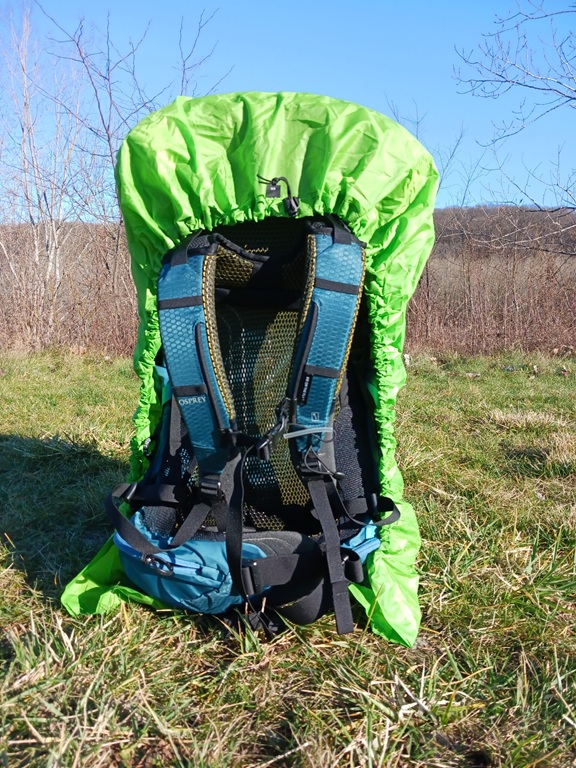
Better options:
- Wear a rain poncho over the backpack and your body.
- Use a backpack liner or equivalent. You should be using one anyway, even if you are using a backpack cover.
Backpack Liner
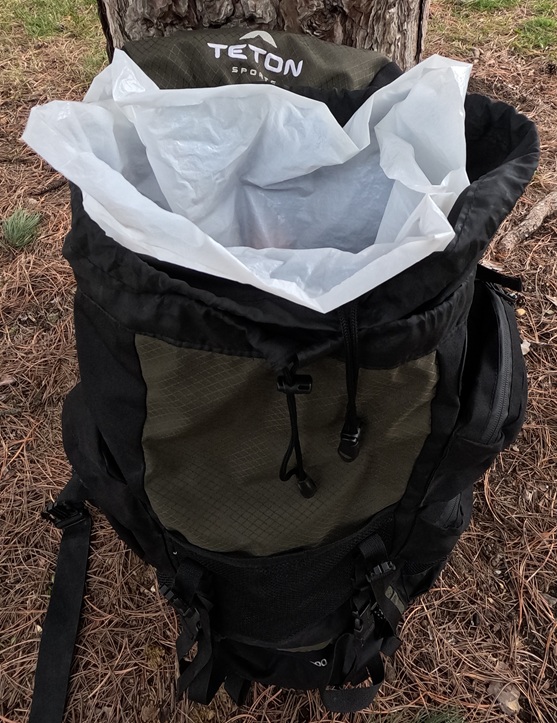
waterproof liner
Keeping your clothes and sleeping bag dry is a crucial safety measure to prevent hypothermia, and backpack liners are more effective than covers for keeping your gear dry. Pack liners generally are expensive, but you can save money by using one of the following options.
- Trash compactor or contractor bag
- Nylofume pack liner. These are stronger than compactor or contractor bags and can be purchased individually instead of in bulk.
